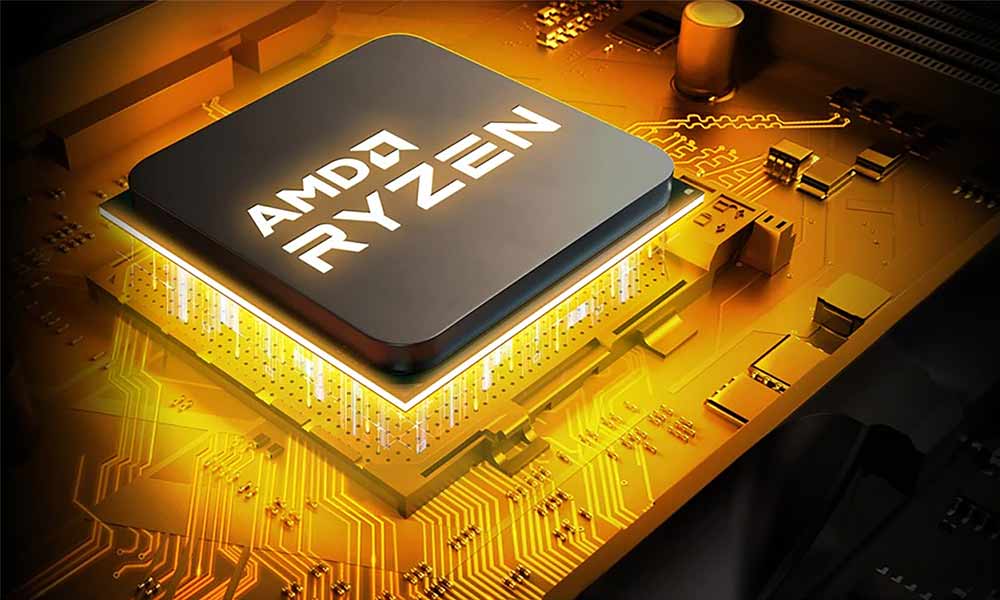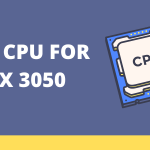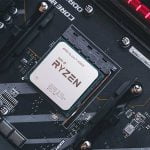AMD released a while ago the A520 chipset, a chipset that is compatible with some of the Ryzen CPUs and is a follow-up to the A320 chipset from 2017.
Today, I will be delving deep into the A520 chipset and discussing its various pros and cons, as well as comparing its specs head-to-head with both the B550 and X570 chipsets directly, in order to see how well it stacks up when compared to them.
Quick Reference Guide
A520 vs B550 vs X570 Chipset
I’ll ultimately decide the overall quality of the A520, and help you figure out whether the new chipset is worth your time and money.
A520 Chipset
The A520 chipset is essentially, for all intentions and purposes, the new “home essentials” CPU chipset. It is a bit basic and barebones but still manages to offer some additional upgrades over the A320 chipset; but the differences here are only marginal.
It is a slight upgrade over AMD’s previous offering, with the main difference being the addition of USB 3.2 10Gbps ports for the CPU.
The A520 also gets four PCIe lanes, which is an upgrade from A320’s four PCIe 2.0 lanes. But its biggest upgrade seen in this chipset is the additional CPU support.
The A520 will be compatible with all of Ryzen 3000-based Zen 2 chips and will offer a path for “future upgrades.” This means that it should be compatible with the upcoming Ryzen 5000-based Zen 3 chips as well.
The A520 motherboards stand as a perfectly adequate choice, offering all basic needs for PC builders with the possibility for future upgradability, but it doesn’t hold as many features as other chipsets.
The A520 chipset is, however, not a bad choice for those shopping on a budget as most A520 boards are available for around $100 or less.
Really, when you look at it, the A520 doesn’t offer very much in terms of upgrades.
The CPU is expanded upon in order to support the most recent models, which is great, but nothing else has really been changed here.
The upgrade from PCIe 2.0 slots to the PCIe 3.0 slots are nice, but that is the only other addition made here.
B550 Chipset
When compared against a B550 chipset, the A520 feels rather basic. One of the major differences between the two chipsets is B550’s overclocking capabilities, versus the A520’s.
The fact of the matter is that the A520 is not intended to be overclocked, while the B550 is quite overclockable.
This may be a deal breaker to many people, as overclocking is very much locked on the A520.
The B550 motherboards also offer more features than the A520 options pretty much across the board, including PCIe 4.0 connectivity, 4 SATA III ports over A520’s 2 SATA III ports, 2 USB 10Gbps ports over A520’s one port, and more.
X570 Chipset
The X570 chipset is also comparatively more feature-packed than the A520, but certainly more than the previously discussed B550 chipset.
It boasts 4 PCIe Gen 4 slots, which is an upgrade over both the B550 and A520 chipsets. This upgrade is unnoticeable for most users, especially to those who are less familiar with PC builds.
But with the eminent release of the 3000-series Ryzen CPUs, the 4.0 slots are likely to be taken better advantage of by the new processors and show their difference in power once the new processors release.
Other upgrades include more USB ports that run at faster speeds (8 USB 10Gbps ports and 4 USB 480Mbps ports versus B550’s offering of 2 USB 10Gbps ports, 2 USB 5Gbps ports, and 6 USB 480Mbps ports). The X570, B550, and A520 each feature 12 USB ports, 10 USB ports, and 8 USB ports, respectively.
The X570 is also quite competent when it comes to overclocking the system, and it should do just fine when paired with a strong processor.
Both the X570 and B550 do just fine in this field, while the A520 struggles to keep up.
Other than these differences, the X570 and B550 offer very similar stats to one another. But it’s clear when getting into the details that the A520 clearly has less to offer.
A520 vs B550 vs X570 Chipset Quick Comparison Table
Here is a comparison table between AMD A520 vs B550 vs X570 chipsets:
| Chipset | PCIe Support | Overclocking Support | Best For |
|---|---|---|---|
| A520 | PCIe 3.0 | No | Budget builds, small office PCs |
| B550 | PCIe 4.0 | Yes | Standard gaming setups, high-value systems |
| X570 | PCIe 4.0 | Yes | High-performance systems, overclocking |
Details:
- The A520 chipset is somewhat handicapped compared to X570 and B550. Its built-in PCI-Express lanes only work at 3.0 speed, and it also limits the Ryzen processor’s own lanes to 3.0 speed. It’s best suited for ultra-budget builds like small office PCs.
- The B550 chipset supports PCIe gen 4 and is equipped with 20 gen 4 lanes. In addition to these, B550 comes with up to 10 gen 3 lanes. It supports RAM and CPU overclocking and is recommended for standard gaming setups and high-value systems.
- The X570 chipset is a premium chipset that supports the latest PCIe 4.0 standard. It offers more higher-speed ports and lanes, allowing you to run high-speed storage devices or high-speed USB connections. The VRMs on the X570 are better at delivering stability compared to the B550 motherboards, making it suitable for high-performance systems and better overclocking.
Common Questions About A520 vs B550 vs X570 Chipset
Is A520 better than B550?
The choice between the A520, B550, and X570 chipsets largely depends on the user’s specific needs and budget.
Here are the main differences
The biggest difference between A520 and B550 is the support of PCIe Gen4 for PEG (PCIe Graphics) and CPU storage
The A520 chipset is somewhat limited compared to X570 and B550, with its built-in PCI-Express lanes only working at 3.0 speed.
While some people believe A520 is as bad as A320, most A520 motherboards have a VRM heat sink, allowing them to maintain higher core count CPUs.
Unlike the A520, B550 supports PCIe gen 4, with each B550 board equipped with 20 gen 4 lanes. In addition to these, B550 comes with up to 10 gen 3 lanes.
In conclusion: While A520 is a budget-friendly choice designed for basic gaming, those seeking a premium motherboard with SLI/Crossfire support and overclocking options might find the B550 a better option.
Does A520 support Ryzen 5000?
Yes, the A520 chipset does support Ryzen 5000 CPUs. However, the compatibility of these chipsets with specific processors may vary, and it’s important to check the motherboard manufacturer’s website for the most accurate information.
Most A520, B550, and X570 motherboards already support AMD Ryzen 5000 processors.
However, it’s important to note that while the A520 chipset can support Ryzen 5000 CPUs, it has some limitations compared to other chipsets. A520 boards are really meant for Ryzen 3 and Athlon parts and not for higher-end Ryzen CPUs. The motherboards lack overclocking support and have limited features and connectivity compared to B and X series boards.
Therefore, while the A520 chipset can technically support Ryzen 5000 CPUs, whether it’s the best choice for your needs will depend on the specific features you’re looking for in a motherboard.
Best Motherboard for the AMD A520 Chipset
Final thoughts on our AMD A520 vs B550 vs X570 Chipset Comparison Guide
Overall, when comparing the A520 vs B550 vs X570, the X570 offers the most advanced features while the B550 is only a bit behind it. The A520 is the most bare-bones, but it is also priced much lower than the other chipsets.
You can grab yourself an A520 board for well under $100, while the B550 boards and X570 boards are mostly priced higher than the $100 range.
Boards with the B550 chipset are generally priced between $100 and $300, while the X570 options, such as 5900X/5900X motherboards, range more greatly between $170 to over $600.
Which chipset is right for you depends entirely on your priorities; if you’re shopping strictly on a budget, then the A520 should be perfectly adequate for your build, especially if you don’t care for overclocking your system.
On the other hand, if you wish to get the most out of your new PC, then you might want to take the plunge and go for a more feature-packed X570 board. The B550 boards are also quite great, offering a similarly great set of features.
Overall, all these boards have their merits, and there is no “right choice” when it comes to finding the best board.
You should pick the board that feels best for you and make the choice for yourself. I hope that this article makes your decision easier and helped to narrow down the choices for you.




